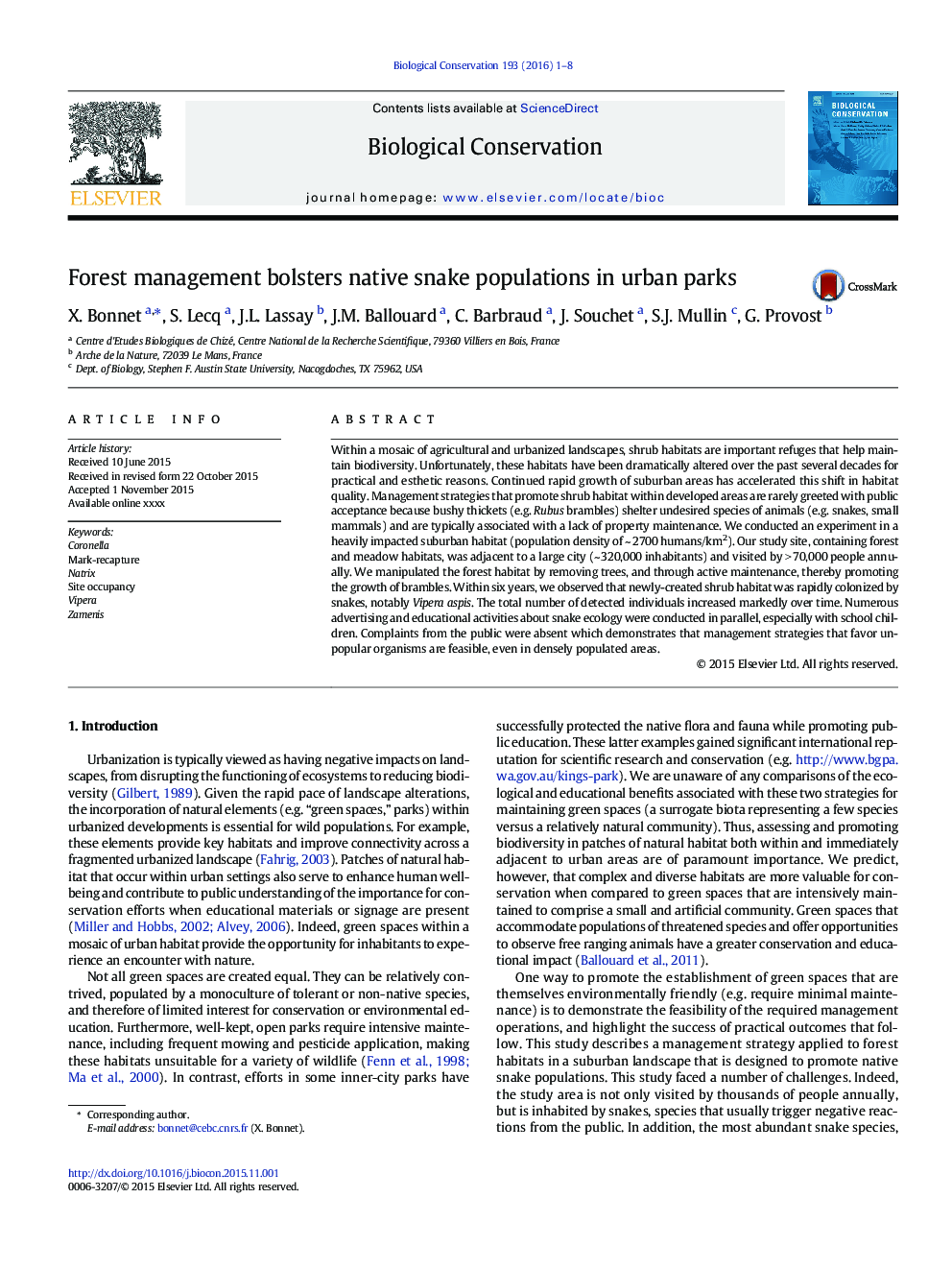| Article ID | Journal | Published Year | Pages | File Type |
|---|---|---|---|---|
| 6298842 | Biological Conservation | 2016 | 8 Pages |
Abstract
Within a mosaic of agricultural and urbanized landscapes, shrub habitats are important refuges that help maintain biodiversity. Unfortunately, these habitats have been dramatically altered over the past several decades for practical and esthetic reasons. Continued rapid growth of suburban areas has accelerated this shift in habitat quality. Management strategies that promote shrub habitat within developed areas are rarely greeted with public acceptance because bushy thickets (e.g. Rubus brambles) shelter undesired species of animals (e.g. snakes, small mammals) and are typically associated with a lack of property maintenance. We conducted an experiment in a heavily impacted suburban habitat (population density of ~Â 2700Â humans/km2). Our study site, containing forest and meadow habitats, was adjacent to a large city (~Â 320,000 inhabitants) and visited by >Â 70,000 people annually. We manipulated the forest habitat by removing trees, and through active maintenance, thereby promoting the growth of brambles. Within six years, we observed that newly-created shrub habitat was rapidly colonized by snakes, notably Vipera aspis. The total number of detected individuals increased markedly over time. Numerous advertising and educational activities about snake ecology were conducted in parallel, especially with school children. Complaints from the public were absent which demonstrates that management strategies that favor unpopular organisms are feasible, even in densely populated areas.
Keywords
Related Topics
Life Sciences
Agricultural and Biological Sciences
Ecology, Evolution, Behavior and Systematics
Authors
X. Bonnet, S. Lecq, J.L. Lassay, J.M. Ballouard, C. Barbraud, J. Souchet, S.J. Mullin, G. Provost,
